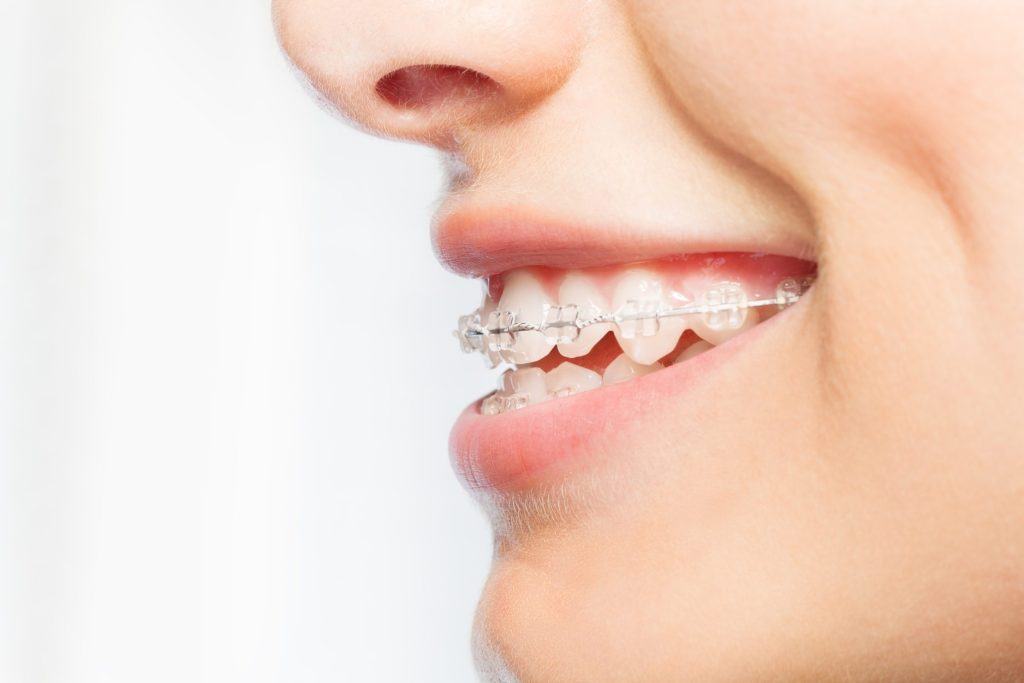When you think about dental health, the way your upper teeth and lower teeth fit together is essential. There are two common issues called overbite and underbite. These can significantly affect your mouth’s health and appearance. Knowing what each one means, what causes them, and what treatment options are available can help you get a healthier and more confident smile.
The Basics of Overbites and Underbites
Overbites and underbites are about how the upper front teeth and lower front teeth fit together when you close your jaw. A small overbite is normal, but if it’s too big, it’s called a malocclusion. An underbite happens when the lower front teeth stick out in front of the upper front teeth when the jaw is closed. If not treated, both issues can cause different dental problems.
Defining Overbite: Depth Beyond the Smile
An overbite, also called a deep bite, happens when the upper front teeth cover the lower front teeth a lot when the jaw is closed. A small overlap is normal, but a big overbite can cause issues. An excessive overbite means that the upper front teeth cover a large part of, or all, the lower front teeth. They might even touch the gum line or the roof of the mouth.
Many things can cause an excessive overbite. These include genetics, jaw structure, and childhood habits like thumb-sucking. Severe overbites can change how someone looks and may cause problems with chewing, speaking, and the health of the jaw joint.
Understanding Underbite: Its Impact Beyond Appearance
An underbite is different from an overbite. In an underbite, the lower jaw sticks out. This causes the lower front teeth to sit in front of the upper front teeth when the mouth is closed. It can make the jaw look like it is sticking out, which some people call “buck teeth.”
Underbites are often related to the bone structure. This means they arise from the size and growth of the lower jaw compared to the upper jaw. A common cause is when the growth of the lower jaw is larger than the upper jaw. This kind of misalignment can affect how a person looks. It can also make it harder to bite, chew, and speak clearly.
The Root Causes: Why Overbites and Underbites Happen
Finding out why someone has an overbite or underbite usually needs a professional look, but there are many common causes. Some people might have these issues because of their genes. For others, things in their environment might cause these problems.
Knowing how these factors work together can help us find good ways to prevent and treat them.
Lifestyle and Habits: From Thumb-Sucking to Tongue Thrusting
Genetics plays an important role in the shape of your jaw. However, some childhood habits can have a direct effect on how overbites and underbites form. These habits can put constant pressure on your teeth and jaws during key growing years.
Here are some common habits:
- Thumb sucking: This habit can cause an overbite by pushing the upper front teeth out and reducing lower jaw growth.
- Pacifier use: Using a pacifier for too long can mess up how your teeth and jaw are aligned, just like thumb sucking.
- Tongue thrusting: This happens when the tongue pushes on the front teeth while you swallow, which can also lead to an overbite.
Acting early and stopping these habits can really help lower the chances of serious teeth complications later on in life.
Diagnosing Dental Misalignments
The first step in fixing an overbite or underbite is to get a correct diagnosis. This usually means getting help from a professional and sometimes noticing signs at home.
Finding it early is important. It helps with timely treatment and can lead to better results.
Professional Assessments
If you think you or your child may have an overbite or underbite, it is important to get checked by a qualified dentist or orthodontist.
To assess the situation, the dentist will likely do a visual check of your teeth and jaws. They may take dental X-rays to look at the bone structure. They might also take impressions or molds of your teeth for a closer look. During this visit, the dentist will consider your medical history, daily habits, and any symptoms you might have.
Self-Check Techniques: Recognizing Signs at Home
To get a clear diagnosis, seeing a professional is very important. But you can do some self-checks at home to spot signs of overbites and underbites.
Stand in front of a mirror and relax your jaw. Look at how your upper front teeth and lower front teeth line up when you gently bite down. If your upper front teeth cover a large part of your lower front teeth, you may have an overbite. If your lower front teeth stick out in front of your upper front teeth, this could mean you have an underbite. Remember, these self-checks don’t replace a professional evaluation. They can just help show early signs.
Treatment Paradigms for Overbites and Underbites
There are many ways to treat overbites and underbites. These options can be non-invasive or involve surgery. Your orthodontist will suggest a specific treatment plan based on things like how severe the issue is, your age, and your overall oral health.
Working closely with your dentist is important. They will help you find the best treatment options that fit your needs.
Traditional Braces: Metal Versus Ceramic Options
When you want to fix an overbite or underbite, traditional braces are a popular and effective choice. Braces work by using gentle pressure on the teeth to gradually move them into the right position. They have brackets fixed to each tooth, linked by an orthodontic wire that gets tightened from time to time.
Patients can usually choose between metal braces, which are the traditional type, or ceramic braces, which look less obvious. Metal braces are often stronger and cheaper, while ceramic braces offer a more hidden look. Your orthodontist can help you pick the right braces for your lifestyle and preferences.
Surgical Interventions: When Non-Invasive Methods Aren’t Enough
While braces and aligners effectively address many cases of overbites and underbites, severe skeletal discrepancies may require surgical intervention. Jaw surgery, often called orthognathic surgery, focuses on correcting the alignment of the jaws themselves, creating a more balanced and functional bite.
This corrective jaw surgery is typically reserved for cases where malocclusions significantly impact chewing, speech, or facial aesthetics and have not responded adequately to non-invasive treatments.
Learn More About the Difference Between Overbite vs. Underbite
Understanding the differences between overbites and underbites is important for good dental health. These problems are not just about how your teeth look; they also affect how well your mouth works and your oral health. Genetics and personal habits can help cause these conditions. Getting a diagnosis early and finding the right treatment, like braces or surgery, is essential to fix these issues. If you think your teeth are misaligned, see a professional right away to avoid health problems later on. Your dental health is key to your overall health. For specific help with overbites or underbites, contact Camelot Dental Group today.




